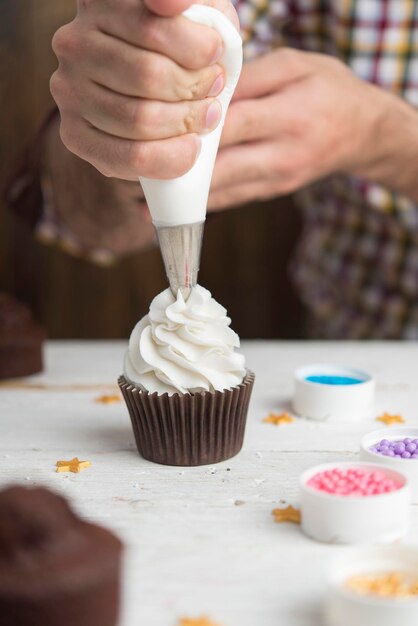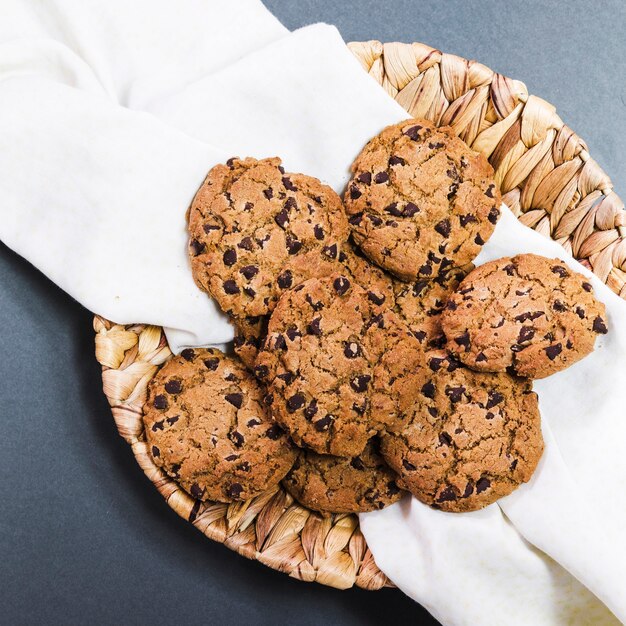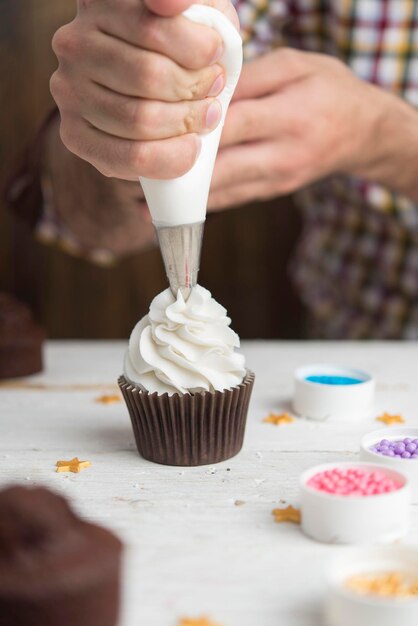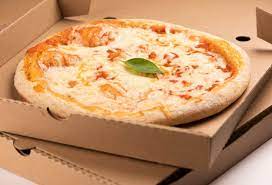One of the greatest challenges in the culinary world is the art of resurrecting the warmth in food without compromising its taste, texture, or nutrient content. Whether you run a gourmet restaurant, a homely diner, or just cooking at home, having a foolproof technique to restore heat to meals is crucial for ensuring your dishes remain appetizing and safe to eat. This article provides a meticulously curated guide to successfully reheating food whilst maintaining its hot state for longer periods.
Reheating food can be a tricky feat as it requires precise control of temperature to avoid overcooking or uneven heating. This necessitates a deep understanding of the food’s characteristics and the most suitable technique to bring back its warmth. Embarking on this journey, you will learn the paradigms of reheating different types of dishes, from rice and pasta to meat and vegetables, using appliances ranging from microwaves to ovens and stovetops.
Furthermore, the topic broadens to cover aspects of food safety, highlighting the importance of maintaining the food in an appropriate hot state after heating. The guide outlines industry-approved temperatures for hot holding and offers techniques to keep your food safely heated for extended periods. Essential for food service professionals, these guidelines also equip home cooks with knowledge to preserve the quality of their reheated meals.
Ready to embark on this educational voyage? Keep reading to unravel the science and art behind reheating food and keeping it hot for extended periods. This guide promises a wealth of practical solutions to prevent food from cooling down too quickly and thereby preserving its taste and quality.
DIGGING DEEPER INTO THE THEORY OF KEEPING FOOD WARM
When it comes to serving food that has been cooked earlier, it becomes crucial to grasp an important aspect known as ‘maintaining food at heated temperatures’ or simply ‘hot holding’. This might seem like an easy task of just keeping the food warm but technically, it involves a lot more than that. Understanding this is key to preserving both the taste and safety of the food items in question.
WHAT IS HOT HOLDING?
Learning about hot holding begins with getting to know what it exactly means. There’s more to it than just ‘keeping the food hot’. Fundamentally, it is the process of keeping already cooked or pre-heated food at a constant temperature until it is served. Hot holding is particularly significant in catering and food service industries, helping to ensure that the food is safe for consumption and doesn’t lose its palatable qualities over time.
The safe temperature zone for hot holding is usually above 60 degrees Celsius or 140 degrees Fahrenheit. This range ensures that the food stays out of the ‘danger zone’ which is between 5 and 60 degrees Celsius (41 and 140 degrees Fahrenheit), where bacteria have ideal conditions to multiply.
Hot holding is not merely a storage solution, but a mechanism that calls for the proper equipment and techniques to keep the food at the correct temperature without overcooking or drying it out.
WHY IS HOT HOLDING IMPORTANT?
So why does maintaining food in the state of being heated matters? For the simple reason that it helps in mitigating the risk of foodborne illnesses. In various settings, food may not be served straight away post-cooking, which makes holding it at the correct temperatures, till the point of service, vital for safety reasons. It prevents harmful bacteria from multiplying, thus avoiding any potential for food poisoning.
Additionally, hot holding is also essential for preserving the taste, texture, and overall quality of the food items. It allows people to enjoy their meal at an appropriate temperature, enhancing their dining experience. So, in essence, the hot holding technique benefits both the food-serving establishment and the customers.
Following the correct protocols for hot holding foods helps food services to serve meals that are not only delicious, but safe to consume, ticking all the boxes for quality control.
FOLLOWING THE APPROPRIATE STEPS TO THAW YOUR MEALS: GETTING READY FOR WARMING UP
Prior to reheating, properly thawing foods is an essential first step. Ignoring this stage or doing it incorrectly might disrupt the quality of your food. Meals could lose their taste and nutrients, or even become unsafe to consume. So, let’s talk about the specifics of getting your meals adequately defrosted and ready to be reheated.
PREPARING YOUR MEALS FOR THE WARMING PROCESS USING CORRECT THAWING TECHNIQUES
Places like the refrigerator are reliable for thawing, as they maintain your food at a safe temperature during all phases of the thawing process. Smaller items will usually thaw overnight while larger foods may require a full day or more.
Here are a few comprehensive steps to guide you:
- Use a leak-proof plastic bag to hold the food if the original packaging could let the water in. This will prevent the food from absorbing water, which may change the texture and taste.
- Submerge the food in cold water. Keep it under by placing a plate or lid over the food.
- Alter the cold water every 30 minutes until the meal is fully defrosted.
Bear in mind, each type of food has its unique thawing requirements. While some items thaw easily, others may need more time and care. Examine your food carefully and adjust the approach if necessary.
Note: If you are pressed for time, you might be tempted to speed up the thawing process. However, methods like using hot water or a microwave might compromise food safety and quality. Always choose reliable and safe methods, albeit slower, to maintain optimum food conditions.
CORRECT METHODS TO HEAT VARIOUS KINDS OF DISHES
Ensuring proper and safe heating of food is essential not just for maintaining food quality, but also for ensuring food safety. Techniques for reheating different types of food safely vary and understanding these methods can ensure flavor and nutrient retention while preventing foodborne illness.
GRAINS AND PASTA
When heating grains and pasta, add a few tablespoons of water to the dish before placing it in a microwave. The steam generated will help these dishes maintain their texture and prevent them from going dry. Cover the dish with a microwave-safe lid or plastic wrap, but ensure to leave a small part uncovered for the steam to escape.
MEATS AND POULTRY
For treating portions of meat or poultry, it’s essential to heat them at a steady, slow pace to maintain their tenderness. One method is to use an oven set at a low temperature, wrapped in foil to retain moisture. Alternatively, microwaving covered with a microwave-safe cover, splashed with a bit of stock or wine, can also offer good results.
VEGETABLES
Reheating vegetables without leading to a nutrient loss involves warm water baths, steaming or microwaving. These heat foods gently and evenly, therefore, preventing overcooking and preserving both taste and nutrition. For microwaving, add a little water to the veggies and cover them loosely.
SEAFOOD
Seafood must be reheated carefully because it tends to dry out quickly. For best results, gently heat on the stove with a bit of oil or broth. Alternatively, baking in an oven at a low temperature with some moisture is also a good method. Remember that overcooking can make seafood tough and unpalatable.
All these dissimilar food types need different reheating methods in order to preserve their texture, taste, and nutritional value. Ensuring that your food is reheated appropriately is a crucial step towards enjoying a tasty and safe culinary experience.
KEEPING AN EYE ON TEMPERATURE: ENSURING SAFE AND HIGH-QUALITY FOOD DURING REHEATING
One of most critical factors at play when revitalizing cold meals to hot servings is maintaining precise temperature management. By preserving the integrity of the original cooking, you enhance not only the taste but also the safety of the food. Therefore, being knowledgeable on temperature control is a culinary must.
RECOGNIZING THE IMPORTANCE OF TEMPERATURE CONTROL
Often overlooked, proper temperature management prevents the growth of harmful bacteria, thus reducing the risk of food-borne illnesses. It also ensures that the reheated dish will still have the same desired taste, color, and texture, essentially preserving the food’s overall quality.
In relation with hot holding, food must achieve a minimum internal temperature to retard bacterial growth. Conversely, overheating the food might result in necessary nutrients being lost or can even make the food dry and less palatable.
- Retention of Nutrients: Vitamins and minerals can be destroyed or leached out when food is overheated. Hence, using the right heating level is vital.
- Texture and Flavor Maintenance: Overheating can cause the food to become tough, chewy, or rubbery. To maintain its original texture and taste, food must not be cooked beyond its optimal temperature.
- Food Safety: Pre-warmed food must be kept at a certain temperature to prevent the proliferation of harmful microorganisms. This is crucial, especially for meat and poultry that are more prone to bacterial contamination.
Implementing the correct reheating techniques, coupled with precise temperature control, guarantees quality and delivers safe, delicious hot meals.
AVOIDING BLUNDERS IN THE PROCESS OF WARMING UP FOOD FOR EXTENDED HIGH-TEMPERATURE STORAGE
When preparing food for lengthy periods of high temperature storage, it’s important to be aware of common lapses that people often make in the reheating process. By avoiding these issues, you will not only maintain the quality of your food but also ensure its safety.
OVERLOOKING THE SIGNIFICANCE OF UNIFORM HEAT DISTRIBUTION
The need for uniform heating while warming up your food is commonly ignored. However, neglecting this crucial step can leave some portions overly heated while others remain cold, encouraging the growth of dangerous bacteria. Therefore, stirring the food halfway through the reheating process will help ensure even heat distribution.
Never permitting the Temperature to reach 165°F:
One of the major blunders is not allowing the temperature to hit 165°F (74°C), the safety threshold set by the USDA. This temperature is crucial for killing harmful bacteria and ensuring food safety. Always verify the temperature by using a food thermometer and ensuring that this critical temperature has been obtained in all parts of the food.
MISHAPS WITH INADEQUATE THAWING
No discussion about warming meals for high-temperature preservation would be complete without addressing the problem of improper thawing. Bacteria multiply rapidly on frozen food that is not properly defrosted prior to reheating. Therefore, never heat frozen food directly, always defrost the meal in the refrigerator, cold water, or the microwave prior to heating.
Being Indifferent towards Time
It is a commonly held mistake to leave food at a high temperature for extended periods. Extended exposure to heat can deplete the food’s nutritional content and alter its consistency.
In summary, pay careful attention to ensuring uniform heat, reaching the right internal temperature of 165°F, proper thawing, and being mindful of the length of heating. Understanding these aspects will help maintain the quality and safety of the food.
FAQ: HOW DO YOU REHEAT FOOD FOR HOT HOLDING
What is a common mistake to avoid when reheating food for hot holding?
A common mistake is not reheating food to the correct temperature. This can potentially create a breeding ground for bacteria, hence it is crucial to reheat food to at least 165 degrees Fahrenheit or 74 degrees Celsius.
How long should I maintain the food at the correct temperature after reheating it for hot holding?
The food should be maintained at the correct temperature for minimum 15 seconds after reheating it. This ensures that potential bacteria in the food are killed.
Is it a mistake to reheat food unevenly?
Yes, it is. Uneven reheating can leave certain parts of the food under-heated or over-heated. This could potentially lead to foodborne illness. To avoid this, stir the food midway through the reheating process.
Is slow reheating a mistake when it comes to hot holding foods?
Yes, reheating food slowly can cause growth of harmful bacteria. It is advisable to rapidly reheat the food to kill any potential bacteria.
Is it fine to reheat food multiple times before hot holding?
No, it is a mistake to reheat food multiple times as it increases the risk of foodborne illnesses. Reheat only what you plan to eat and avoid multiple rounds of reheating.
Can I reheat food for hot holding in a chafing dish?
No, using a chafing dish or similar devices just to reheat food is incorrect. These devices are designed to keep foods warm and not to reheat them. Always reheat food in proper equipment like an oven or microwave to the right temperature before placing in a chafing dish for hot holding.
What is the temperature danger zone?
The temperature danger zone refers to the range of temperatures between 41°F (5°C) and 135°F (57°C) where bacteria can grow rapidly in food, posing a risk to food safety.
How long can potentially hazardous food remain in the temperature danger zone before it becomes unsafe to consume?
Potentially hazardous food should not be in the temperature danger zone for more than 4 hours. Beyond this time, the risk of bacterial growth and foodborne illness increases significantly.
How should employees reheat food safely to ensure it passes through the temperature danger zone quickly?
To reheat food safely and efficiently, it should be rapidly heated to an internal temperature of at least 165°F (74°C) within 2 hours.
What is the recommended maximum amount of time that cooked and cooled food can be held in the temperature danger zone before being consumed or reheated?
Cooked and cooled food should not be in the temperature danger zone for longer than 4 hours, as this can encourage bacterial growth and potentially lead to foodborne illness.
Can you provide an example of a temperature within the temperature danger zone?
An example of a temperature within the temperature danger zone is 100°F (38°C), which falls within the range of temperatures where bacteria can multiply rapidly.
What is the minimum temperature to which potentially hazardous food should be reheated to ensure it is safe for hot-holding?
Potentially hazardous food should be reheated to an internal temperature of at least 165°F (74°C) before being hot-held to ensure food safety.
How does keeping food at temperatures below 41°F (5°C) contribute to food safety?
Keeping food at temperatures below 41°F (5°C) slows down bacterial growth and prevents food from entering the temperature danger zone where bacteria can multiply rapidly.
What does the term “TCS” stand for in relation to food safety?
“TCS” stands for “Time/Temperature Control for Safety,” referring to foods that require specific time and temperature controls to prevent bacterial growth and ensure food safety.
Why is it important to ensure that ready-to-eat foods are stored at a temperature of 41°F (5°C) or lower?
Storing ready-to-eat foods at 41°F (5°C) or lower helps prevent the growth of harmful bacteria and maintains the quality and safety of the product.
How does reheating previously cooked food that has been cooled and reheated affect the growth of bacteria?
Reheating previously cooked food that has been cooled and reheated to an internal temperature of at least 165°F (74°C) helps to kill any bacteria that may have multiplied during the cooling process, reducing the risk of foodborne illness.





